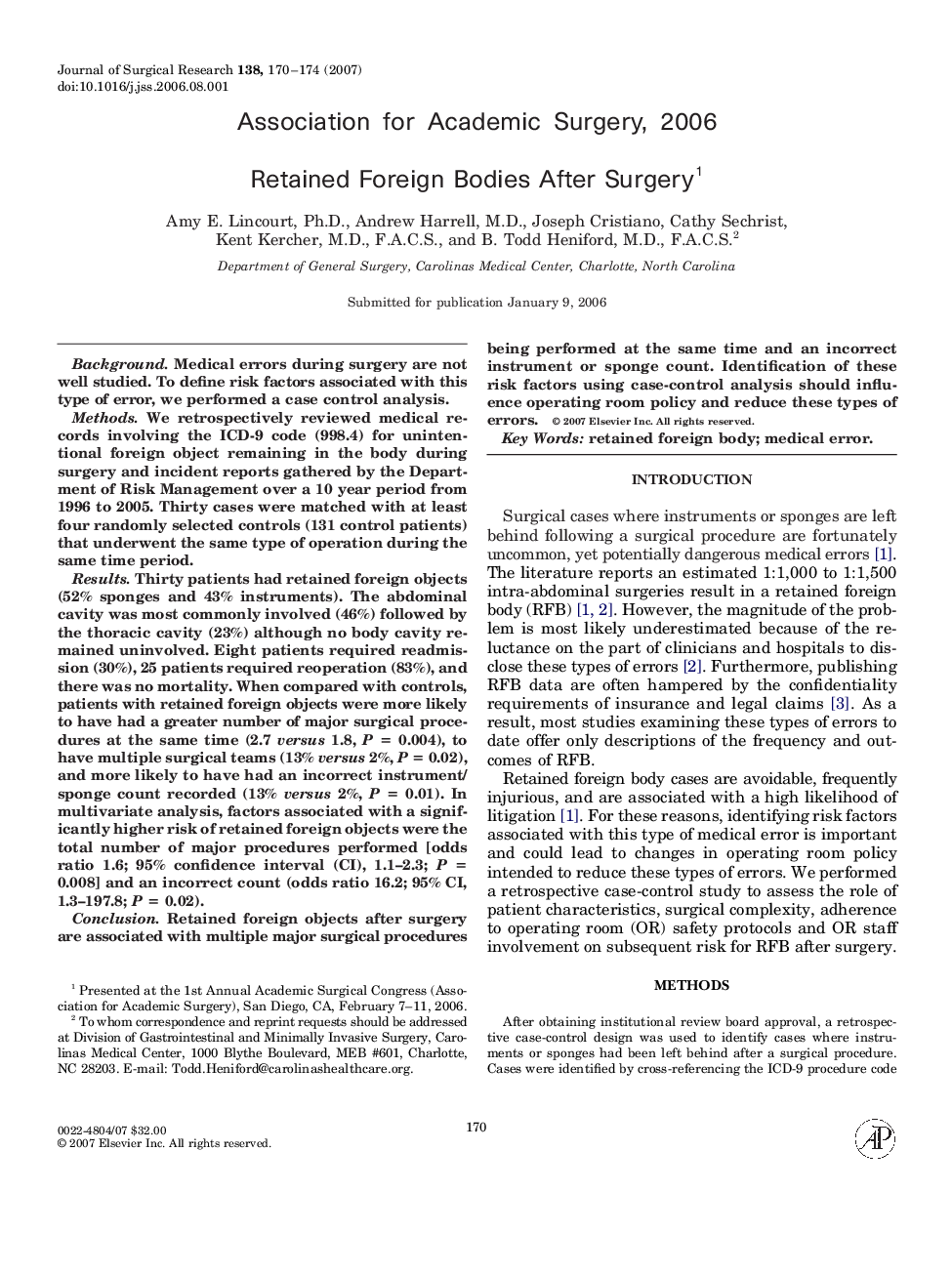| کد مقاله | کد نشریه | سال انتشار | مقاله انگلیسی | نسخه تمام متن |
|---|---|---|---|---|
| 4305117 | 1288525 | 2007 | 5 صفحه PDF | دانلود رایگان |

BackgroundMedical errors during surgery are not well studied. To define risk factors associated with this type of error, we performed a case control analysis.MethodsWe retrospectively reviewed medical records involving the ICD-9 code (998.4) for unintentional foreign object remaining in the body during surgery and incident reports gathered by the Department of Risk Management over a 10 year period from 1996 to 2005. Thirty cases were matched with at least four randomly selected controls (131 control patients) that underwent the same type of operation during the same time period.ResultsThirty patients had retained foreign objects (52% sponges and 43% instruments). The abdominal cavity was most commonly involved (46%) followed by the thoracic cavity (23%) although no body cavity remained uninvolved. Eight patients required readmission (30%), 25 patients required reoperation (83%), and there was no mortality. When compared with controls, patients with retained foreign objects were more likely to have had a greater number of major surgical procedures at the same time (2.7 versus 1.8, P = 0.004), to have multiple surgical teams (13% versus 2%, P = 0.02), and more likely to have had an incorrect instrument/sponge count recorded (13% versus 2%, P = 0.01). In multivariate analysis, factors associated with a significantly higher risk of retained foreign objects were the total number of major procedures performed [odds ratio 1.6; 95% confidence interval (CI), 1.1–2.3; P = 0.008] and an incorrect count (odds ratio 16.2; 95% CI, 1.3–197.8; P = 0.02).ConclusionRetained foreign objects after surgery are associated with multiple major surgical procedures being performed at the same time and an incorrect instrument or sponge count. Identification of these risk factors using case-control analysis should influence operating room policy and reduce these types of errors.
Journal: Journal of Surgical Research - Volume 138, Issue 2, April 2007, Pages 170–174